Leer en Español
How can a grass native to tropical East Africa help North American sparrows in the middle of an upstate New York winter?
The grass, Sorghum-sudangrass, has been planted by farmers in North America for decades. It’s a fast-growing summer annual that adds carbon to soil, smothers out competing weeds, and can even be used as forage for cattle and other livestock. It’s also cheap and widely available. Most farm operators plant it as a warm season cover crop to keep down weeds in fallow fields or as a stop gap when a spring planting was missed due to wet weather. Typically planted in June or July, it grows rapidly forming a dense tall stand. Most farmers mow it down or plow it under in the fall to give the stems a chance to break down before the following spring’s cash crop.
I started with a simple question: What would happen if farmers left plots of frost-killed Sorghum sudangrass standing in the winter? Would it provide quality habitat for regionally threatened Savannah Sparrows, local Song Sparrows, or winter-visiting American Tree Sparrows?
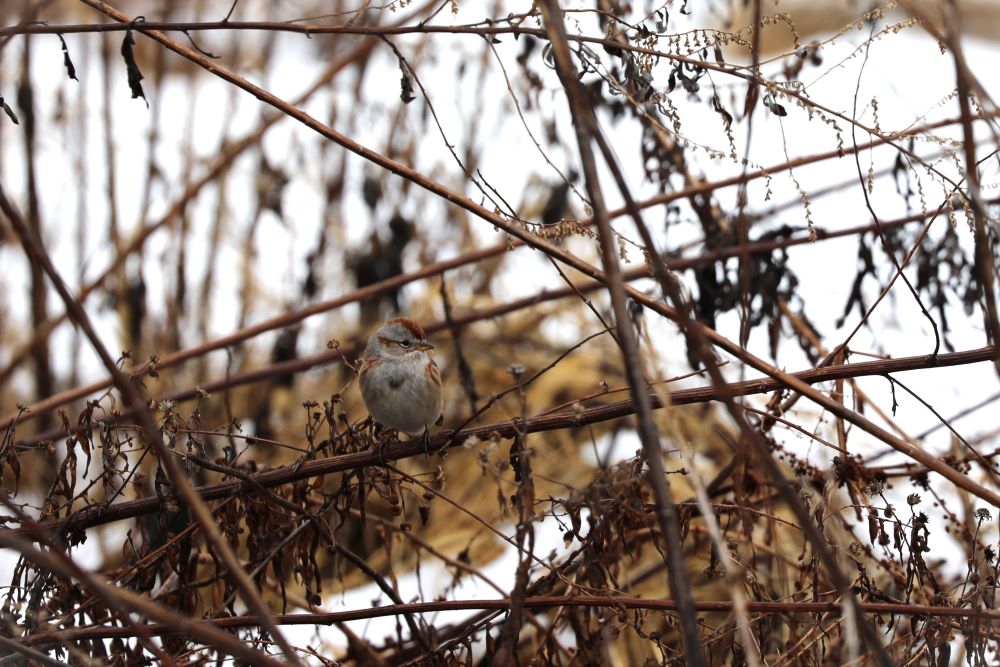
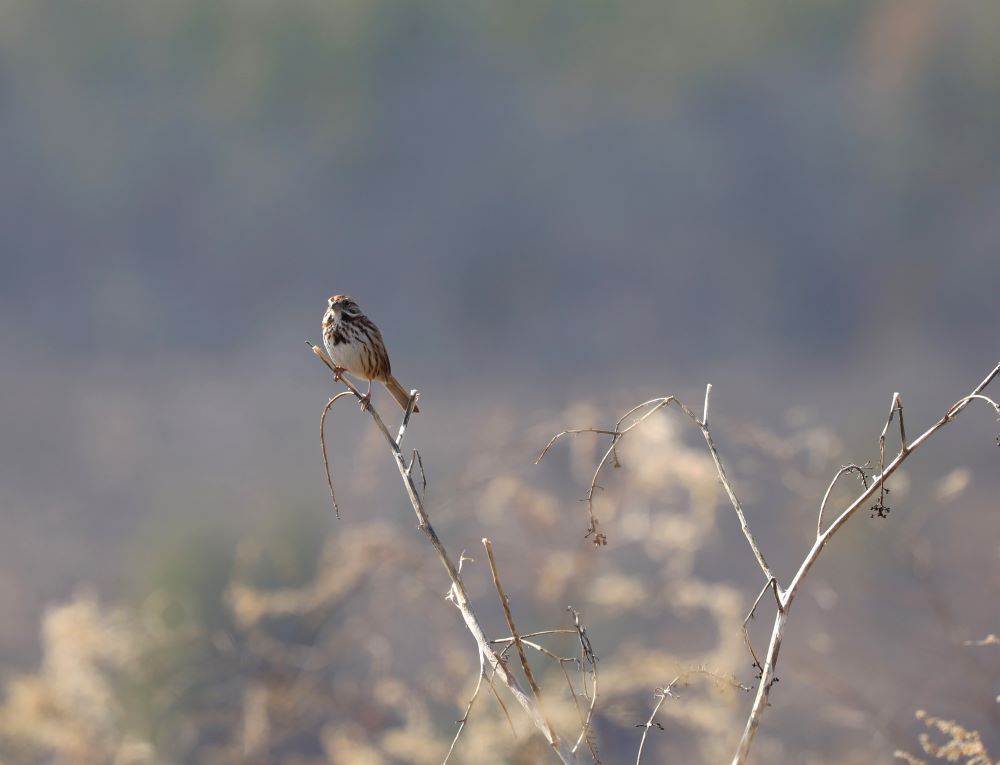
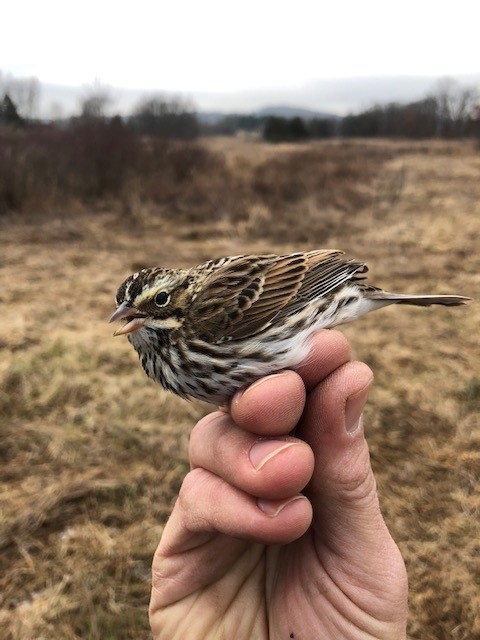
The answer, it seems, depends on the type of Sorghum-sudangrass that you plant. There are two distinct forms. One cultivar is self-sterile and forms the tall leaves of the grass but no seeds. The second nonsterile form produces abundant seeds (as many as 3,000 per square meter).
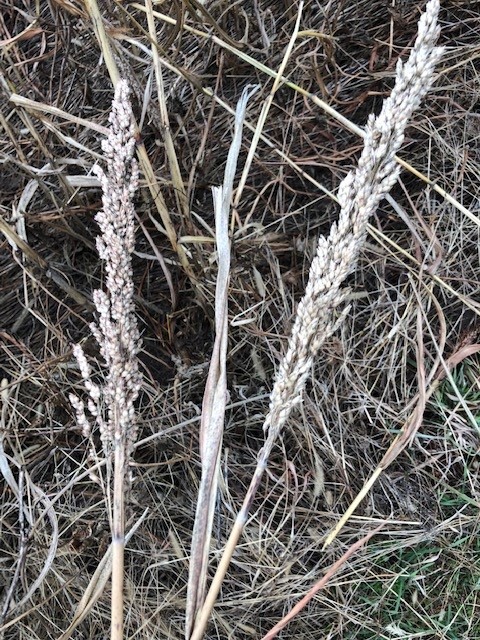
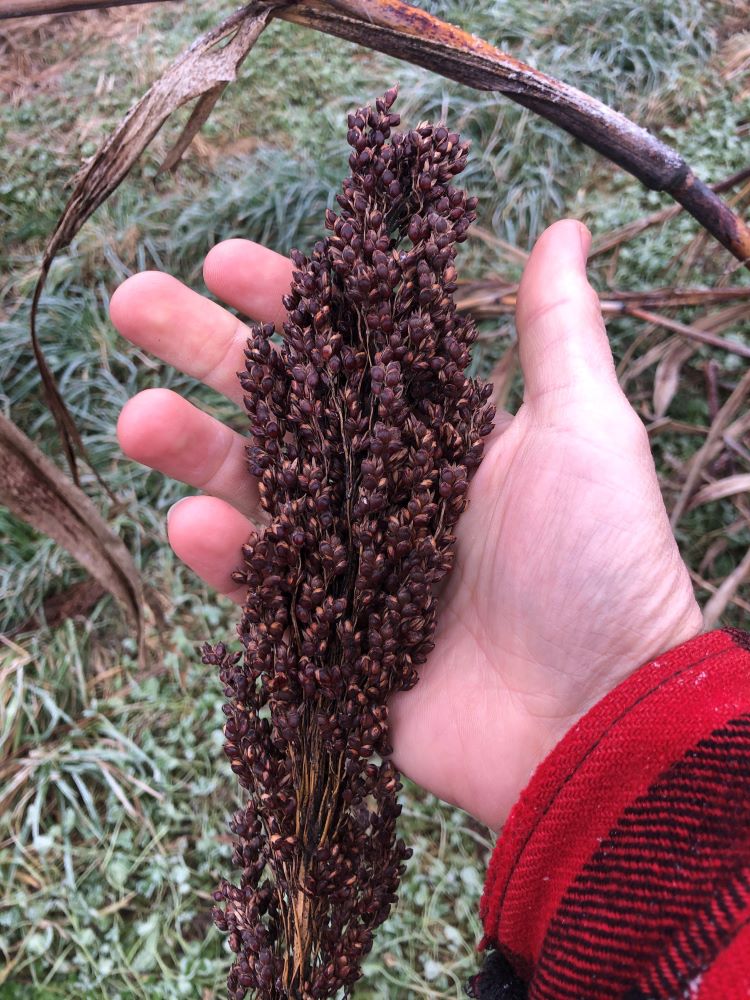
When farmers planted nonsterile Sorghum-sudangrass at the Farm Hub, the effect on local bird abundance was dramatic – such plots hosted three to four times the number of individual birds compared to unmanaged weedy areas of the farm from December through February. It seems that such plots act as landscape-level birdfeeders, where calories are free for the taking within vegetative cover that serves as protection from predators.
When sterile cultivars of Sorghum-sudangrass are left standing in the winter, the habitat value is reduced, but is not zero. Even with no seeds to serve as food, many groups of birds still used the dense cover as overnight winter roosts and left at dawn to forage for weed seeds elsewhere on the farm.
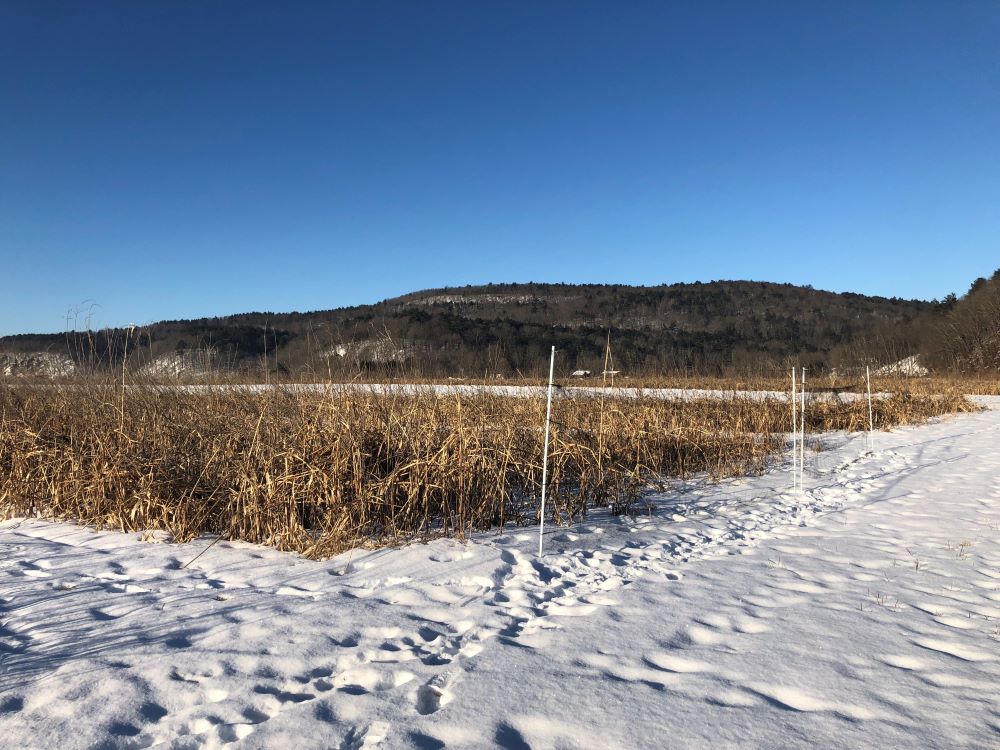
We also asked the question: Do the same birds stay to feed in Sorghum-sudangrass plots and do those birds feeding there for long periods of time have better health then those that feed in wild unmanaged sections of the farm?
The answers to those questions are emerging and ongoing. By banding birds (capturing them in nearly invisible mist nets, carefully removing birds from nets and clamping lightweight bands on their legs) we have been able to keep track of individual birds. Although some birds remained at the Farm Hub throughout the winter, many did not and appeared to use both managed habitats (like the Sorghum-sudangrass plots) and unmanaged areas (weedy road edges, construction waste sites) as they move around the local area or region beyond. So-called site fidelity, the measure of how often a bird stays put in one place was highest for American Tree Sparrows, relatively low for Savannah Sparrows, and moderate for Song Sparrows.
We have found something interesting about the fat levels of sparrows that did remain long-term in Sorghum-sudangrass plots compared to birds feeding elsewhere. Paradoxically, many birds that forage in areas with abundant food are slimmer. When food is easy to find, there is no need to store those calories since fat presents a tradeoff: fat is an insurance policy against starvation, but also makes for a sluggish bird less able to evade predators. The sparrows captured and recaptured in Sorghum-sudangrass plots, showed significantly less fat than sparrows observed elsewhere at the Farm Hub and at other weedy places in the Hudson Valley. One possible explanation is that the abundant seeds found in Sorghum-sudangrass plots offer a stable food source– the sparrows that frequent such areas for weeks at a time don’t lay on as much fat because they don’t have to—the next meal is only a few hops away and available day after day.
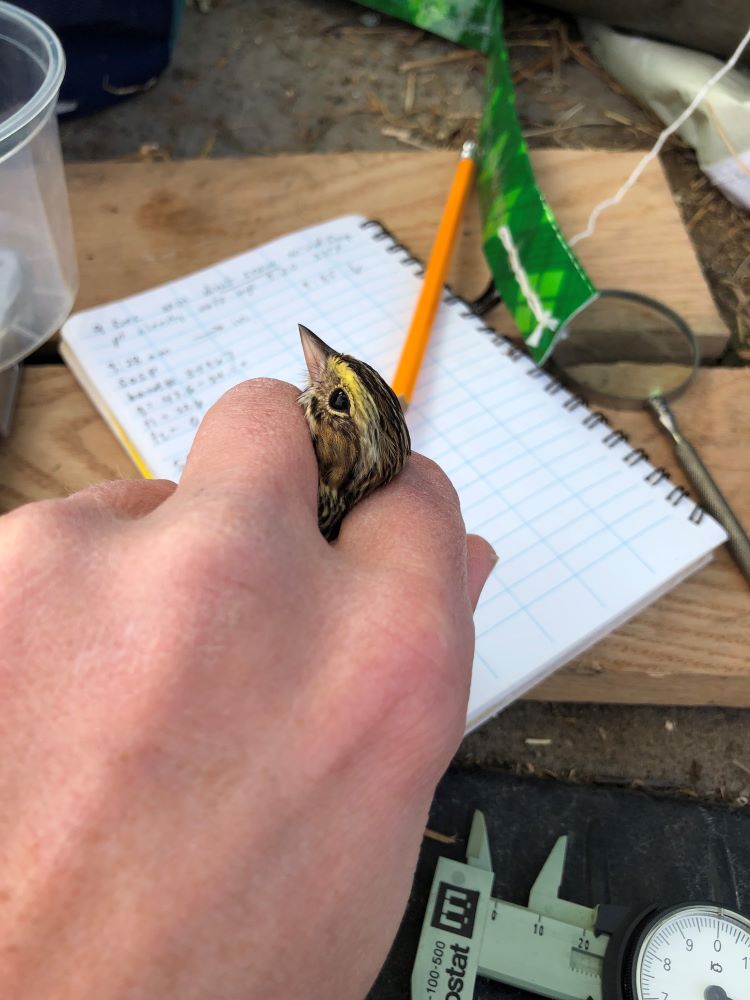
If nonsterile Sorghum-sudangrass plots act as winter bird feeders on the farm when farmers are not using the land, should farmers always plant them and leave them to seed? That answer to that is complicated. Unless cover crops are terminated before they set seed, many can produce so-called ‘volunteer seeds’ that can persist and compete as weeds with the next cash crop. As in many cases with farm management, there is often a tradeoff: Should farmers help birds at the expense of harming next season’s harvest? Much of this depends on the next crop. It may be unadvisable for farmers to let Sorghum-sudangrass set seed if they plan to follow up with a spring planting of corn since the developing shoots of corn and Sorghum-sudangrass are nearly identical. The key challenge here is cultivation – the mechanical removal of undesired weeds from the main crop—which can be difficult when a tractor operator or fieldworker with a hoe can’t discern the difference between crop and weed.
This limitation doesn’t apply to all crops, however, and the successive impacts on, say, cucurbits (e.g. fall squash and pumpkins) may be significantly less since shoots of those cash crops are visibly different. We are working with Farm Hub staff as well as with farmers in the Hudson Valley to better understand these potential conflicts so that we can fine-tune possible recommendations.
As all farms, both conventional and organic, intensify their production models to maintain profitability, the need to provide habitat for a variety of organisms, birds included, becomes more urgent. I am interested in ways in which farms can create or improve on-farm habitats without sacrificing profitability. After all, farms that are not profitable risk the danger of converting to other land uses, including development. Although not a perfect solution for all production models, winter plots of nonsterile Sorghum-sudangrass may be one of many solutions to provide quality habitat using nonspecialized equipment and seeds that are accessible to farmers throughout the Northeast.
My challenge to our community is as follows: If you are a farmer, can you think of ways to tweak management to leave a bit more room for wildlife? If you are an ecologist, can you ask questions that relate to organisms inhabiting the practical world of humans? If you are a consumer, can you dig past easy labels such as ‘organic’ or ‘sustainable’ to understand (and reward) farms of all backgrounds who make room for wildness? I’m certain that there are many exciting and creative solutions that await discovery and we will find them if we choose to explore together.
Will Yandik is a fourth-generation farmer, Hudson Valley native, and independent researcher with a background in environmental sciences from Princeton University, The University of Wisconsin and Brown University.
